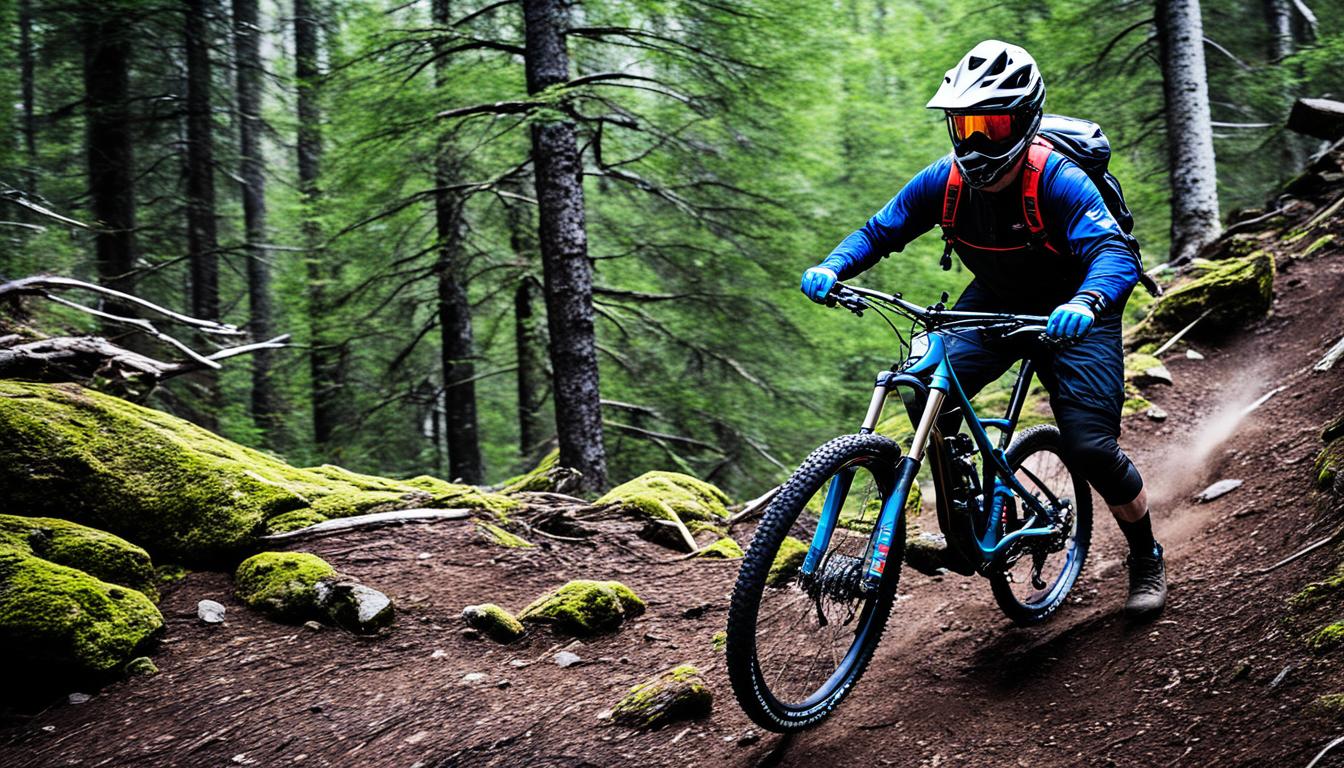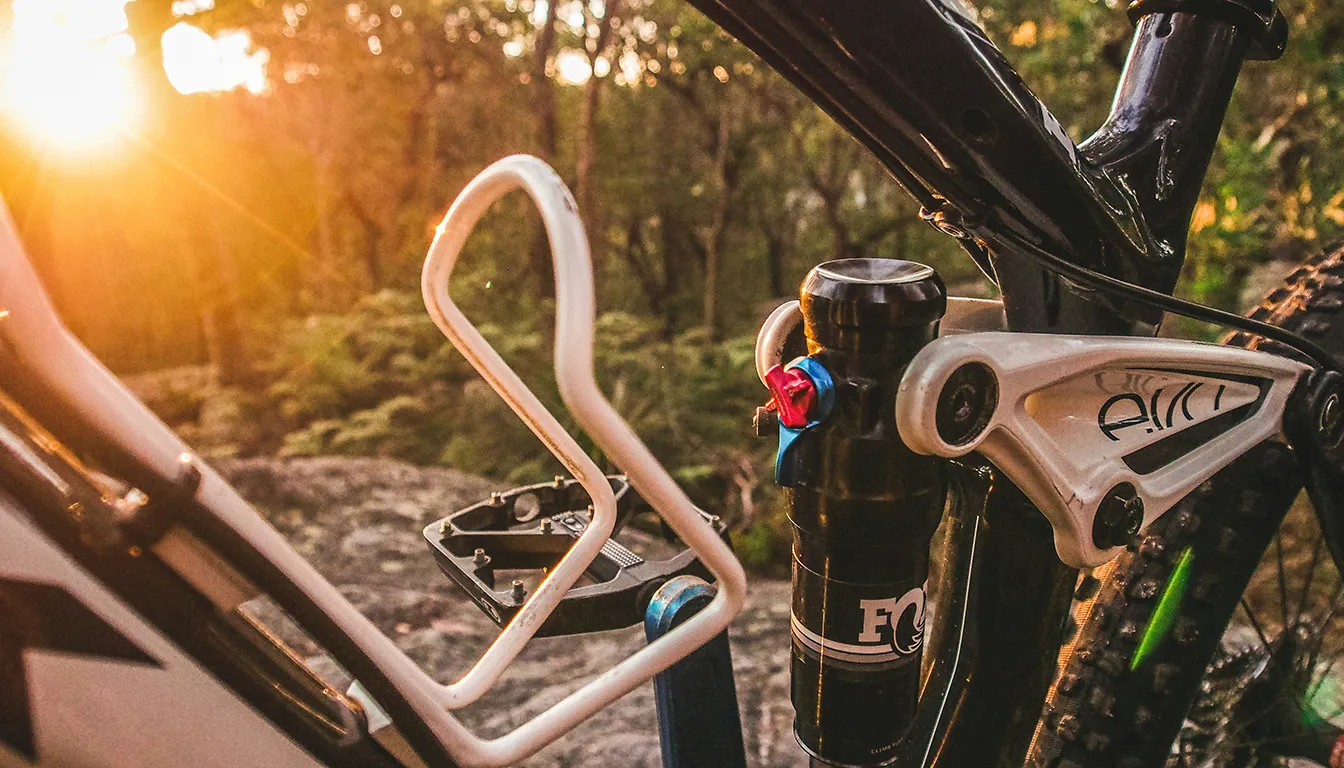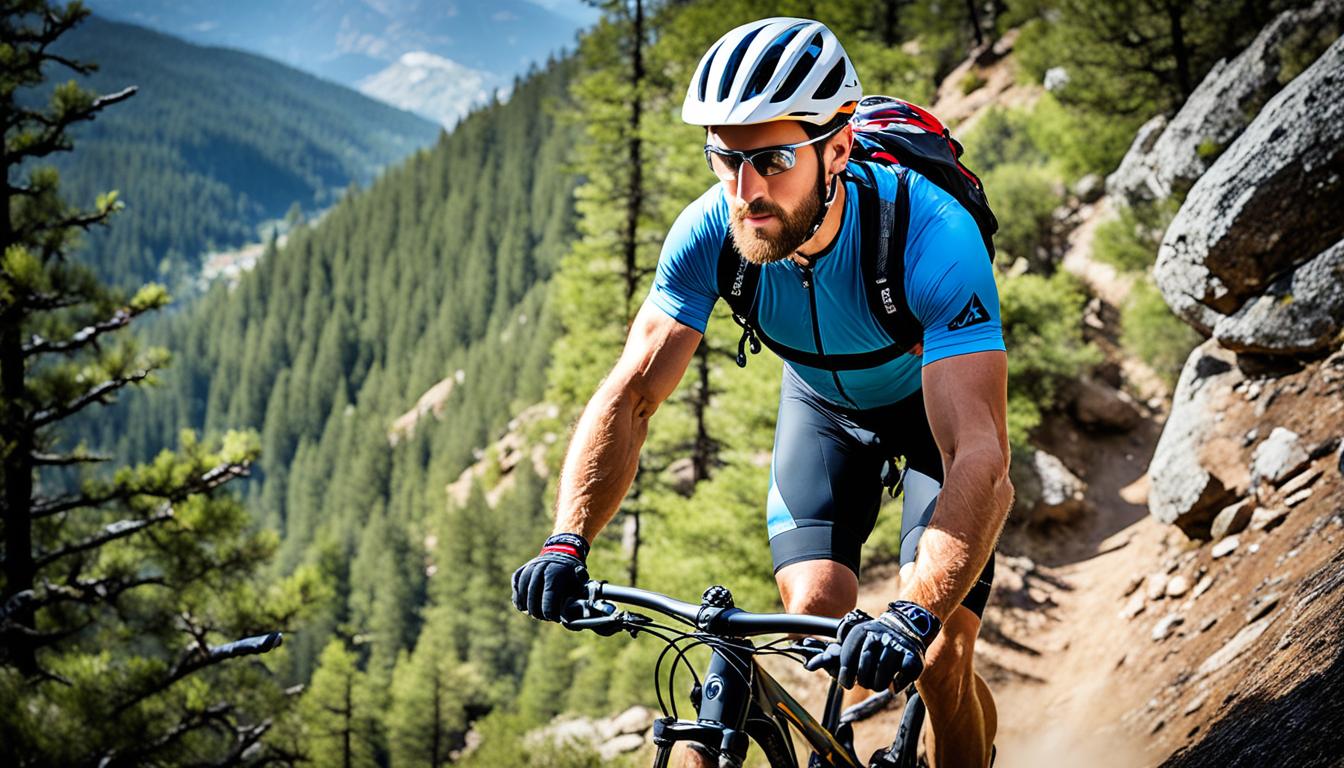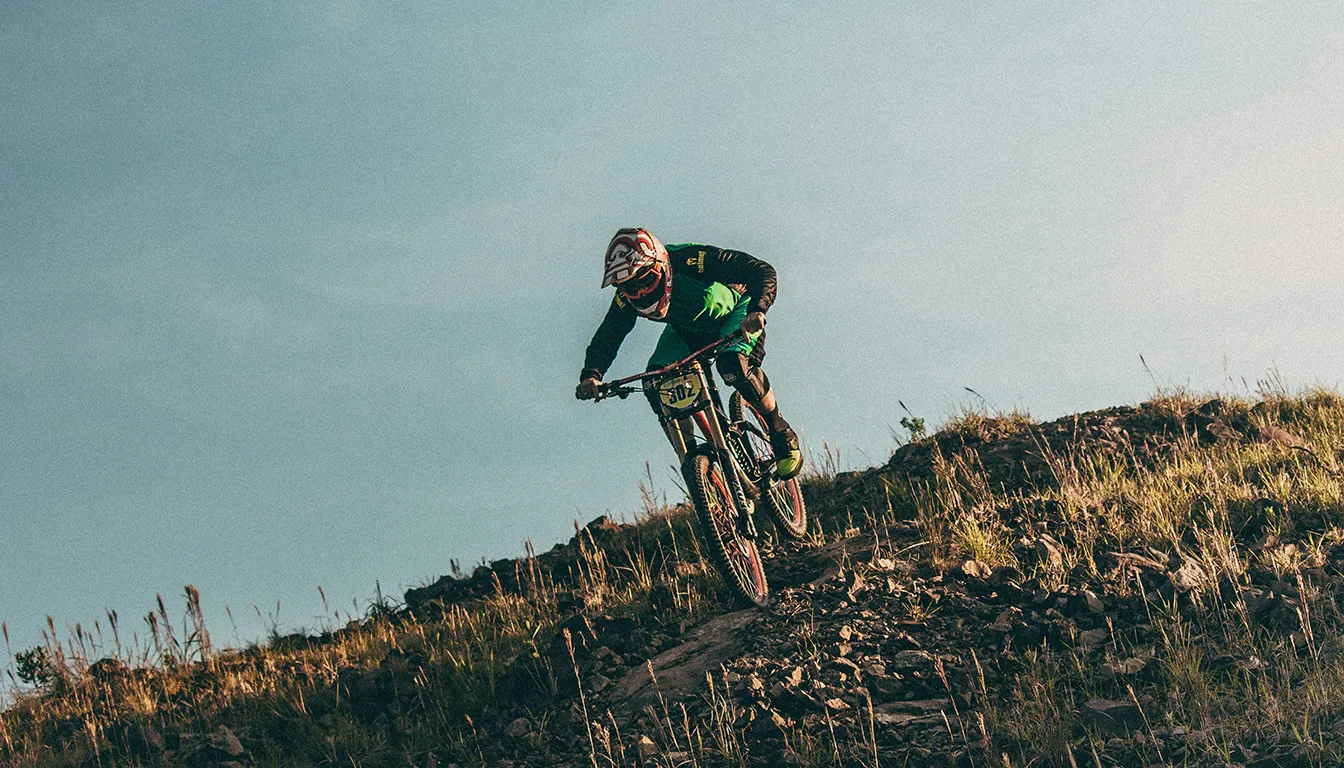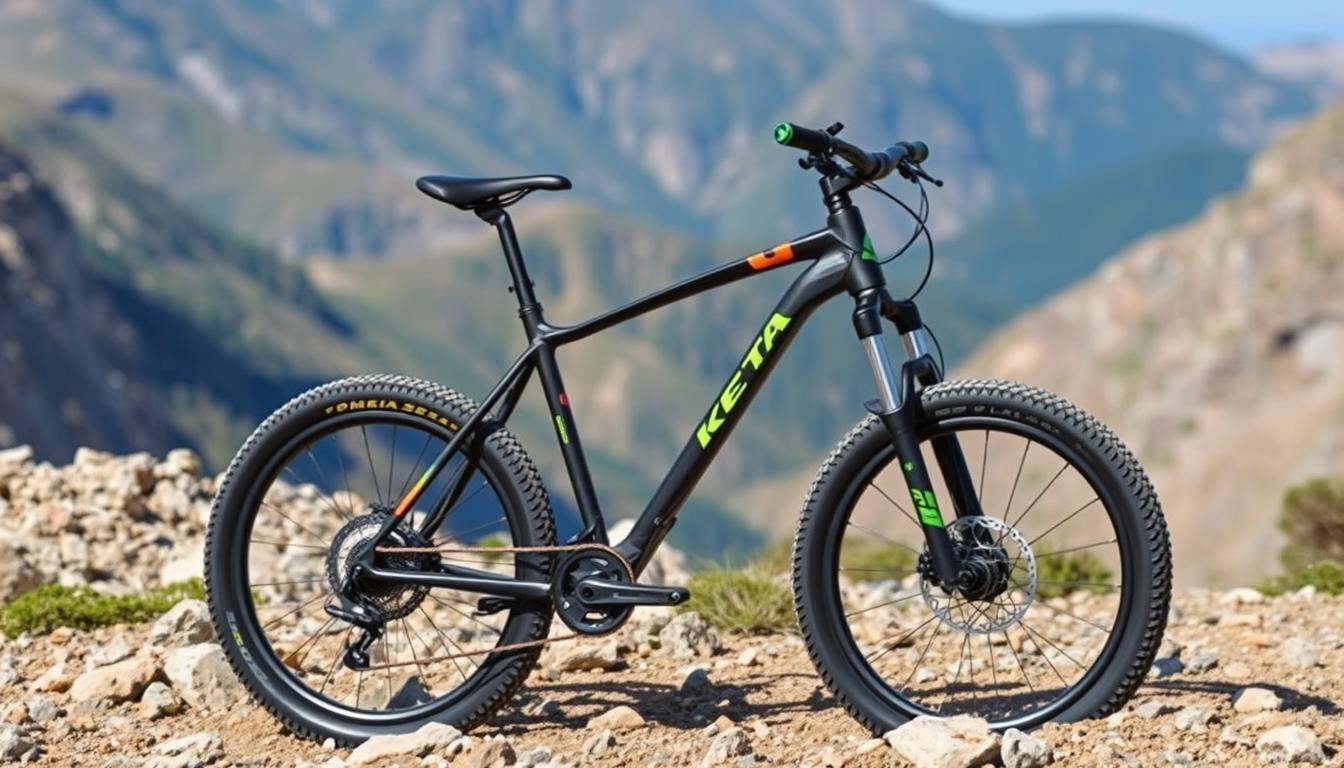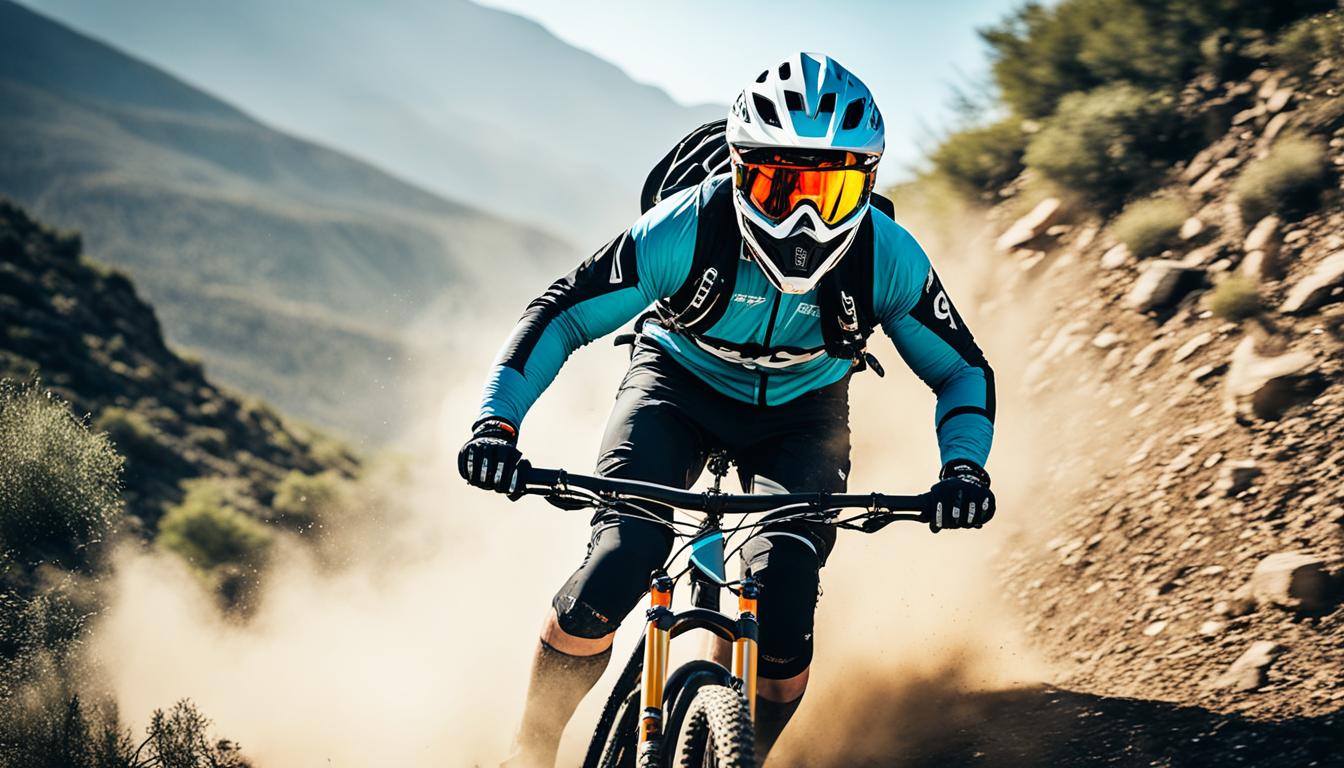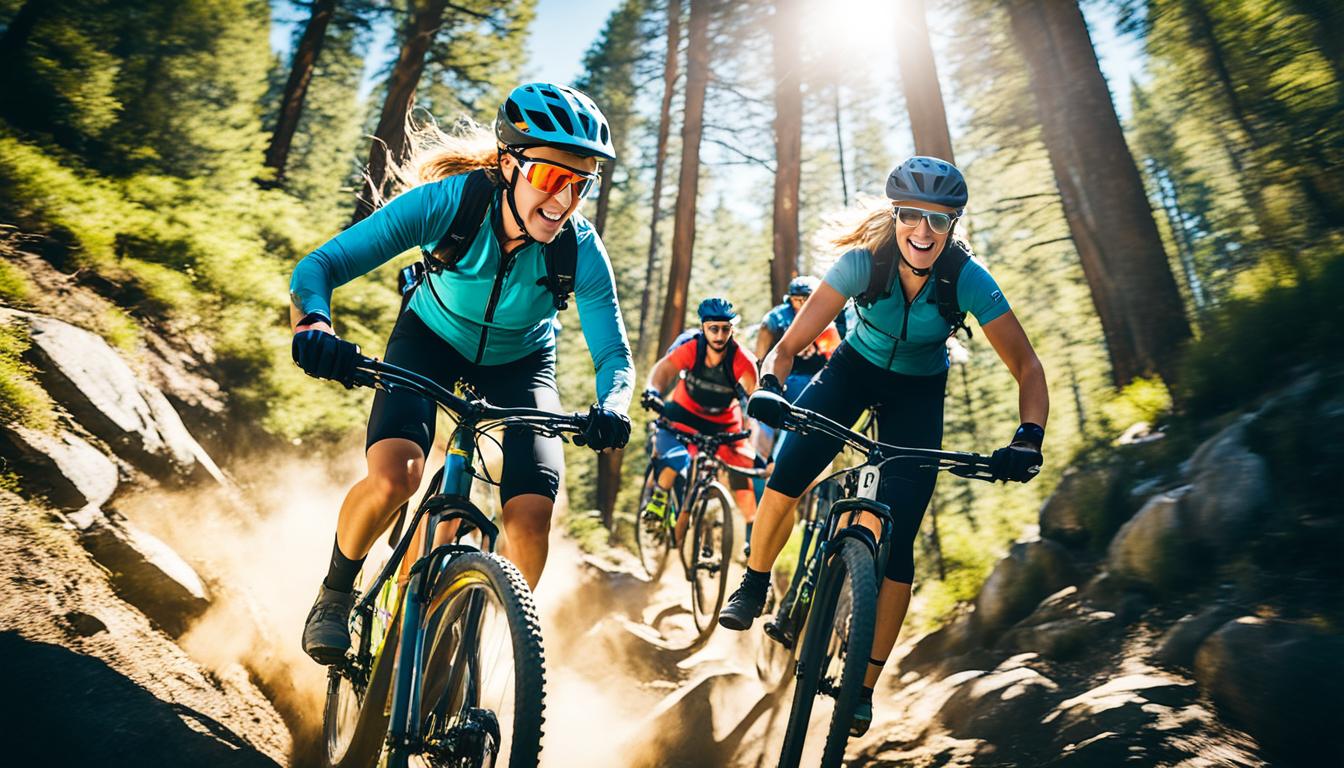Getting your enduro bike set up right is key. It makes riding comfy, improves performance, and keeps you safe on trails. This beginner guide for enduro bikes will show you the important bits and how to adjust them. From setting your saddle at the right height to tweaking your handlebar angle for better posture, each step is important.
Many riders find a saddle angle that’s flat or slightly tipped forward feels best. This small change can really boost comfort and power on the bike. Also, setting the handlebar height so it lines up right with the wheel helps with balance and posture, improving your ride greatly.
Always remember, keeping your bike well-maintained and really knowing how it works can make a big difference on challenging trails. We suggest beginners ride at least once a week to get better at bike handling. Plus, add two 3-hour rides on hilly routes to your weekly routine for stamina. Getting your bike set up right from the start is crucial to becoming a skilled and confident rider.
Understanding Enduro Bikes
Enduro bikes shine in the cycling world, made for those who love tough paths and tricky downslopes. Their unique features let riders move smoothly up and down, boosting fun and performance on wild tracks.
What Makes Enduro Bikes Unique?
The characteristics of enduro bikes are key for handling different terrains. They’re built for quicker, steadier rides on bumpy grounds, unlike regular mountain bikes. They stand out with:
- Suspension travel usually from 150mm to 180mm, for top-notch shock absorption on uneven trails.
- A design that helps riders stay balanced and in control when speeding.
- Strong wheels and tyres, made to last but still keep up the pace.
Key Features of an Enduro Bike
An excellent enduro bike has certain enduro bike features for its best use and trustworthiness. Here’s what to note:
| Feature | Description |
|---|---|
| Suspension | Offers around 150mm to 180mm of travel for smooth rides over bumps. |
| Frame Material | Can be carbon for lightness or aluminium for more robustness. |
| Wheel Size | Usually has 29-inch wheels for better balance and smoothness over bumps. |
| Tyre Design | Comes with thick, soft tyres for grip and to avoid punctures. |
| Drivetrain | Typically uses a 1x system for easy and effective climbing. |
These enduro bike characteristics prepare riders for varied routes, making ups and downs exciting. Knowing these details helps beginners pick the right enduro bike.
Essential Components of an Enduro Bike
For any beginner, knowing an enduro bike’s key parts is vital to improve their rides. These include the suspension, types of drivetrains, and the right wheels and tyres. Each part is crucial for the bike’s performance across different terrains and challenges.
Suspension and Travel
The suspension on an enduro bike is made for top-notch performance. Riders get to enjoy a suspension travel between 150mm to 180mm. This range helps control steep drops and smooth climbs. A properly adjusted suspension, air-sprung or coil-over, soaks up bumps and keeps pedalling efficient. Features like adjustable damping and pedal platforms improve uphill rides, making for a balanced journey on varied trails.
Drivetrain Choices: 1×10 vs. Other Systems
The 1×10 drivetrain is a favourite for its simple gear shifting, without needing a front derailleur. This makes the bike lighter and easier to look after. With a 34-tooth chainring and an 11-36t cassette, it offers a broad gear range for climbing. It also means smoother gear changes and less chance of chain drops, making rides more reliable.
Wheel and Tyre Selection
Picking the right wheels and tyres is key for the best enduro performance. Wider rims with big tyres (around 2.3-2.6 inches) improve grip and control on tough paths. The ideal tyre for enduro has deep treads and sidewall protection for tackling rough spots confidently. Tubeless tyres, like the Continental Baron, are preferred for their lasting build and smooth handling on rocky terrains.
How to Set Up Your Enduro Bike as a Beginner
Setting up your enduro bike correctly can really change how you ride. It makes the bike feel better, easier to control, and work better overall. By getting the right settings for your enduro bike suspension, enduro bike tyre pressure, and bike geometry setup, you’ll handle different paths better.
Adjusting Suspension Settings
Getting your suspension setup right is key for good performance on varied ground. New riders should start with the bike suspension settings for beginners. Begin with recommended sag settings, usually 25-30% of total travel. This helps the bike absorb shocks, making the ride more comfortable and in control. Tweaking the rebound and compression lets you fine-tune your ride, helping you deal with steep drops better.
Choosing the Right Tyre Pressure
Tyre pressure is vital for how your bike sticks to the ground and deals with tough trails. Beginners might try enduro bike tyre pressure around 13-15 psi for rocky ground. It varies based on how much you weigh and what tyres you have. Playing around with tyre pressure settings for beginners will help you find a sweet spot. You’ll get good grip without losing speed, making your rides smoother and more enjoyable.
Proper Bike Geometry and Handlebars
The shape of your bike changes how it feels to ride it. The right bike geometry setup means using a short stem and wide handlebars, at least 760mm across. This setup improves your control, especially on steep paths. Adjusting the handlebars to a good length helps you keep a better posture and balance when you’re standing up. This makes it easier to get over obstacles. Paying attention to handling bar adjustments for enduro can really make your biking better.
For more tips on setting up your enduro bike for top-notch rides, have a look at resources like this beginner’s guide.
Gear and Accessories for Enduro Riding
Getting the right gear is key for enduro riding. Safety and preparation improve the experience. It’s essential to choose the right protective gear and bike tools.
Protective Gear: What You Need
For enduro bikers, safety gear comes first. Here’s the key gear needed:
- Full-face helmet: Gives the best head protection.
- Knee and elbow pads: Protect against falls but still let you move freely.
- Back protector: Crucial for keeping your spine safe during a fall.
- Bash plate: Protects the underside of your bike from rocky paths.
- Leatt GPX 5.5 Flexlock boots: Offers top-notch support and safety.
- Leatt X Frame guards: Prevent knee damage with complete rotation and hyperextension safety.
Essential Tools and Maintenance Supplies
For bike upkeep and solving unexpected trail issues, the right tools are essential. Key tools to have include:
- Multitool for instant adjustments.
- Spare tube for tyre repairs.
- Portable pump to inflate tyres quickly.
- Hydration pack for drinking water on long journeys.
It’s wise to check your bike before rides to ensure brakes and gears work well. Having these tools ready helps you stay calm on tough paths.
Basic Riding Techniques for Beginners
Mastering the basics of enduro biking opens up a thrilling world. It starts with learning to balance and control your ride over different terrains. Improving your skills in bike balance, uphill, and downhill riding is key.
Developing Balance and Control on Technical Trails
A good balance is crucial for tricky trails. Keep your body low to control your bike better. Standing on the bike with a low centre of gravity helps too.
Use your body weight to steer, not just the handlebars. This is important for going over obstacles and making tight turns.
How to Tackle Uphill and Downhill Sections
For uphill, keep moving and adjust your body right. It’s about using gears smartly and how you position yourself. When going downhill, stay relaxed and lean back a bit. This helps manage your speed and stay in control. Always look ahead to spot obstacles early.
Riding with experienced bikers boosts your confidence going down. They can show you the ropes.
Want to dive deeper into mountain biking skills? Check this resource. It covers all from body position to braking properly. It’s a great foundation for safe and enjoyable rides.
Conclusion
Starting your journey in enduro riding is an exciting trip filled with fun and achievement. This guide has given you key info on setting up your enduro bike. Every part, from adjusting your suspension to the right tyre pressure, improves your ride.
Practice makes perfect as you move forward. Upgrades and new challenges lift your confidence and abilities. Remember, protective gear is crucial for safety on steep rides and rough grounds. Tools like navigation apps are key to finding new trails and enjoying your rides to the fullest.
Joining the biking community boosts your experience and teaches you about trail manners. It’s important to keep your bike in good shape and keep improving your skills. With dedication, enduro riding is a thrilling and rewarding adventure. Be confident and prepared as you explore the trails!
FAQ
What is the ideal suspension travel for an enduro bike?
For an enduro bike, the best suspension travel is between 150mm to 170mm. This helps the bike handle uphill and downhill rides on tough trails well.
What drivetrain system is best for beginners in enduro biking?
Beginners should use a 1×10 drivetrain system. It’s simple and works well, without needing a front derailleur. It gives a good range of gears.
How do I adjust my enduro bike’s suspension settings?
Begin with the sag settings around 25-30% of total travel. Then adjust more to fit your style and comfort, for better control.
What should I consider when selecting tyres for my enduro bike?
Pick UST tubeless tyres like the Continental Baron for their grip and toughness. They’re good on rocky ground and give great traction.
What’s the recommended tyre pressure for rocky terrain?
Start with pressures around 13-15 psi. Adjust it based on your weight and tyre type for the best grip and smooth ride.
How can I improve my balance on a technical enduro trail?
Keep a low centre of gravity and stand on your bike. Use your body weight to guide, not just the handlebars. This improves stability on rough paths.
What protective gear is essential for enduro riding?
You must wear a full-face helmet, knee and elbow pads, and a back protector. Choose gear that lets you move freely, keeping you safe and comfortable.
What basic tools should I carry when riding my enduro bike?
Always bring a multitool, spare tube, and a portable pump. Doing regular checks on your bike before rides is also key for a good ride.
How should I handle climbing and descending on an enduro bike?
For climbs, keep moving and pedal effectively. Adjust how you sit or stand on the bike.
When going downhill, stay loose, lean back a bit, and look ahead to spot obstacles early.
